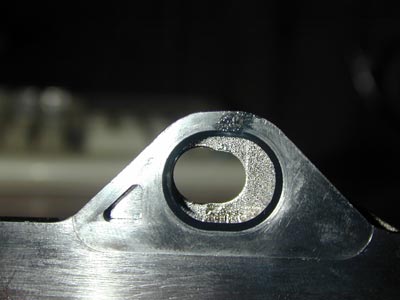
Timing Chain Upgrade
The stock timing chain is prone to failure. The infamous plastic guide is know to break due to slapping of the chain. My experiance with the tensioner is that aftermarket ones are not as good as OEM ones. I never had any timing chain sounds until I replaced the original tensioner with a aftermarket one from the local parts supplier. After a year, there were timing chain noise at startup. The original tensioner never had any noise. I believe in original equipment tensioner no matter what timing chain kit you get. There are several solutions available. DOA sells a metal backed timing chain guide for $80 a set or $275 for a complete timing kit. Engnbldr.com also sells a metal backed timing guide kit for $64. A less know option is to use an OEM guide from an early Toyota engine that has metal guide before the plastic guides were introduced. I found this out from Wade Johnston's web page. I decided to go the OEM route. For the component, I wanted for sure an OEM tensioner which cost $45. I wanted a quality Japanese made chain and gear, and OEM metal guide. I got the OEM tensioner from internet Toyota dealer. Got the OSK timing kit from ebay for about $70. The timing kit components were quite good quality. Gaskets were exactly the same as OEM ones. The tensioner moved very smoothly. My guess is that OSK made the original components for Toyota. I used the passenger side guide from the kit. For the driver guide, I got the 81-82 21R double row chain guide P/N 13561-38010. It cost $48. More expensive than engnbldr, but still cheaper than DOA.
I did get the engnbldr timing kit before all this more expensive parts, but when I saw that the tensioner was "sticky", I returned it. The kit did not have a high quality feel to it. In comparison with the OEM guide, the rubber portion of the metal backed guide on the engnbldr kit was softer then the OEM one. There are difference there.
Modification:
Per Wade Johnston's page, he said he got a 84 22R engine double row timing chain guide which was metal. However, per the babycox.com website, 1983 was when Toyota changed to single row chain. Maybe he meant 81-82 22R. I was told by the Toyota parts person that I have to go to a 21R for metal guide. That was what I got. Wade also said his guide was a direct replacement for the 22RE. That conflicts with babycox.com. I also found out that it is not true. Wade did not elaborate too much in his website about using the 22R guide. In anycase, I was pointed in the wrong direction by reading his webpage. When I got the guide and was ready to put it on, to my surprise, the holes did not line up. I spent an extra day measuring and taking it to the machine shop to elongate the holes.
Looking back, a 81-82 22R guide is the one that probably should have been used. 21R guide is the wrong one, therefore the holes did not line up.

The upper hole had to be moved upward. The black one is the plastic guide. The metal guide is shown behind the plastic one. I asked the machinist to enlarge the hole in a mill.
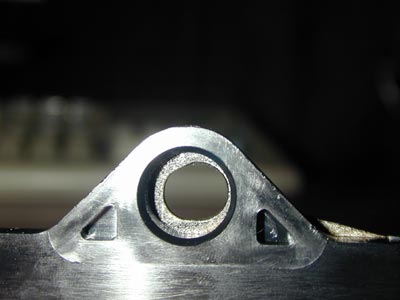
The lower hole had to be moved downward and closer to the outside.
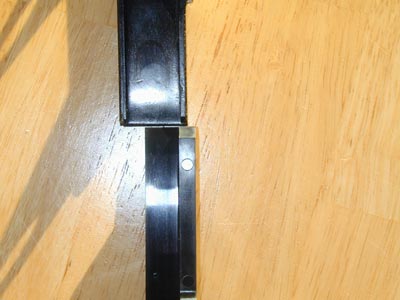
Of course, the height of the metal backed double row chain timing guide is higher. I used an angle grinder with a cutoff blade to slim it down. It took a good 15 minutes and many soaks of the part in cold water to get it cut off. A hack saw might have been a better tool. However, the result was good.
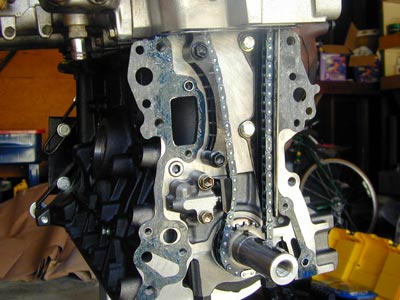
Here is the guide finally installed. Had to get some M10X1.25 metric bolts to replace the longer original ones. Per the manual, the original bolts were similar to the ones seen on the left of the picture, it was a flanged bolt with 2 lines on it, which is clasified as a 6T with 29 ft-lb of tightening torque. However, the bolt I got from the hardware store does not have any lines on it, and no way would take 29 ft-lbs. I used the 4T class torque which is 19 ft-lb. That should be plenty to hold the guide in place. Just to be save, I used generous amount of threadlock on the bolts to make sure they don't come off.
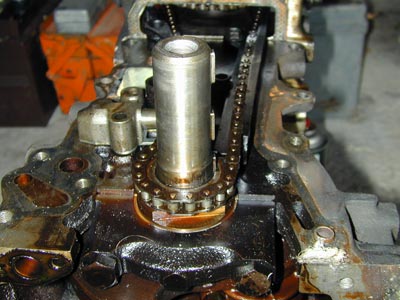
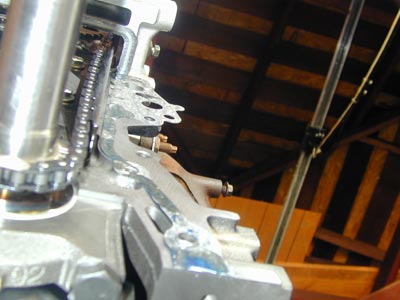
The guide on the original guide press on the chain slightly. Looks like the new metal backed guide also press against the chain slightly for about the same amount as the plastic ones. This shows that the modified holes is where they should be.
Results:
The first time I started the car, I ran it without oil pressure due to the defective engine. However, I noticed that even without oil pressure, there was no sound from the timing chain. The tensioner must be really good and smooth, and was holding the tension with its internal spring alone without assistance from oil pressure.
Then I got another short block and replaced the components on them. No sound ever from the timing chain.
Conclusion:
Choices are:
$64 for engnbldr.com metal guide. Bolt on, but slightly softer rubber. Wears faster?
$163 total for OEM tensioner, OEM metal guide and OSK gear and chain. Requires cutting and enlarging hole, but assurance of quality parts especially the OEM tensioner.
$150 for OSK timing kit plus DOA metal backed guide. Bolt on. Quality of DOA guide compared to OEM unknown. Guess they are probably pretty good though.
$275 full DOA timing kit. Quality of DOA guide unknown.
Had I known about having to modify the holes in the guides, I would have gone with the DOA guides. However, can't go wrong with OEM guides anyway.